Beni Shoga or Red Pickled Ginger is made of julienned young ginger pickled in plum vinegar. It is a refreshing palate cleanser and garnish for Japanese street foods like yakisoba noodles, takoyaki, and okonomiyaki. Make it with just 2 ingredients!
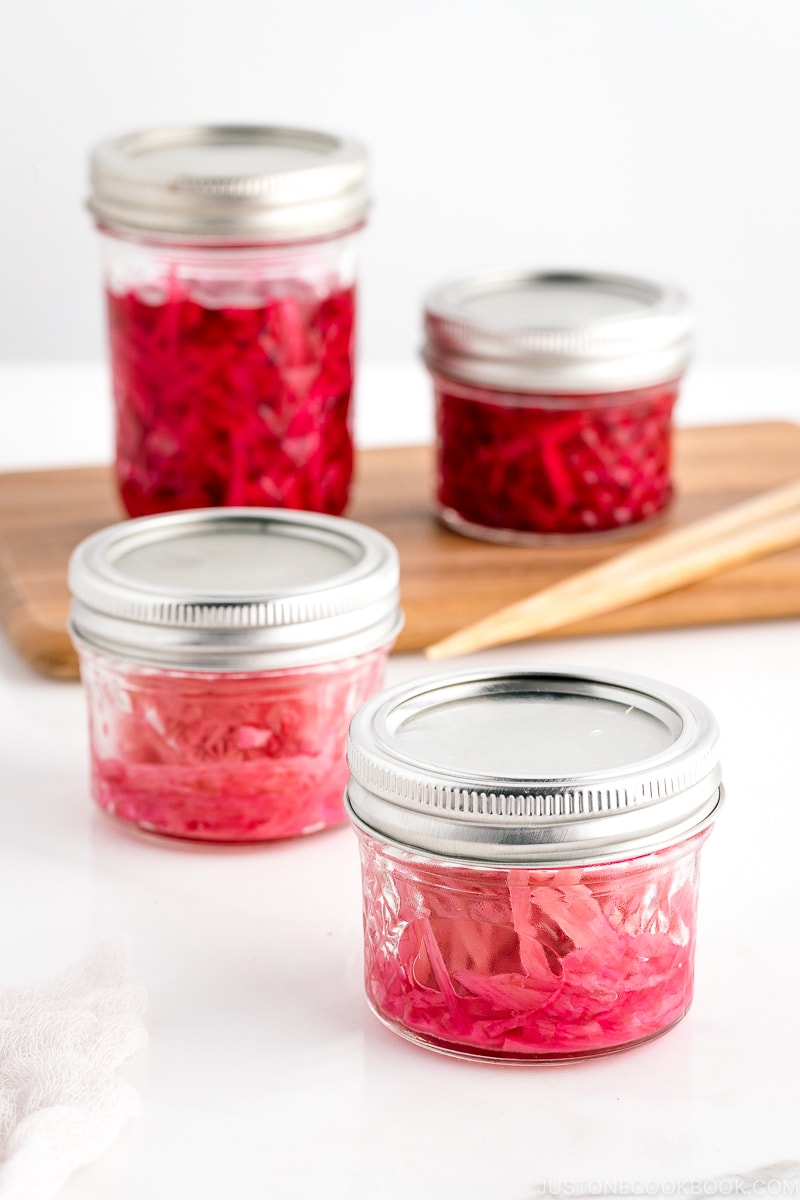
Have you ever noticed the bright red, thin strips that often garnish yakisoba, takoyaki, and okonomiyaki in Japanese cooking? It’s a red pickled ginger that’s called beni shoga (紅生姜) in Japan. Irresistibly tangy and crisp, this topping offers a lovely contrasting bite to any crunchy or fried food.
It’s an easy pickle to make, and it lasts for a year! Let me show you how to make it in my Beni Shoga recipe.
Table of Contents
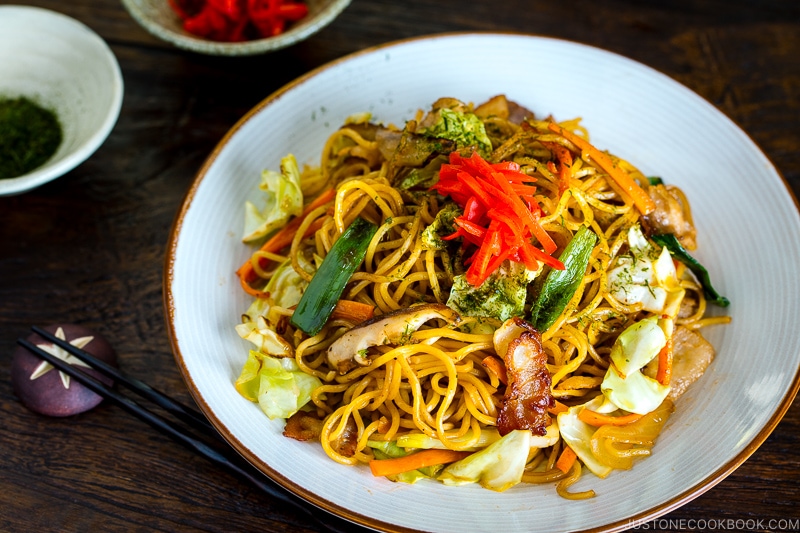
What is Beni Shoga?
Beni shoga, also known as red pickled ginger, is a type of Japanese pickle used as a garnish/condiment. The quick pickle is sometimes called kizami shoga (刻み生姜), as kizami or kizamu means to cut or chop.
Thin strips of julienned young ginger are pickled in ume plum vinegar called umezu (梅酢). The bright red color comes from red perilla (shiso) leaves, or akashiso (赤紫蘇), that are used in the brine (see how it’s made in my Umeboshi post. Store-bought beni shoga often uses artificial coloring.
If you enjoy making food from scratch, summer is the time to get your hands on young ginger as it’s only available then.
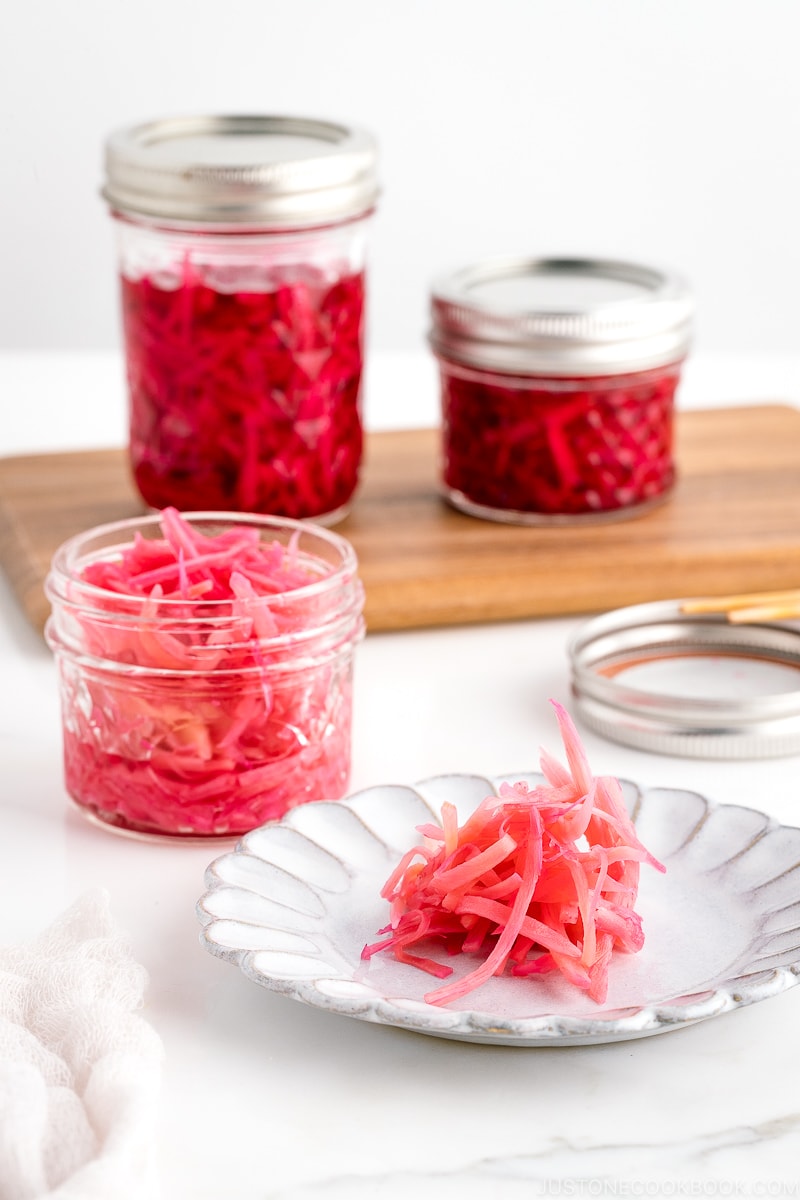
Beni Shoga vs. Gari
It’s easy to mistake beni shoga (red pickled ginger) for Gari (pickled sushi vinegar) as both are made with young ginger. But here are the differences:
- Use: Beni shoga is typically served as a garnish or as an ingredient that goes with fried/grilled food or a hearty donburi rice bowl. On the other hand, gari is mainly served with sushi (and sometimes sashimi).
- Color: Beni shoga is bright red from plum vinegar while gari gets its light pink hue from sweet vinegar (amazu).
- Cut: Beni shoga is julienned into thin strips while gari is thinly sliced.
- Taste: Beni shoga has a tangy, sour flavor from the ume plum vinegar. Gari has a sweet and tangy flavor from a mixture of rice vinegar and sugar.
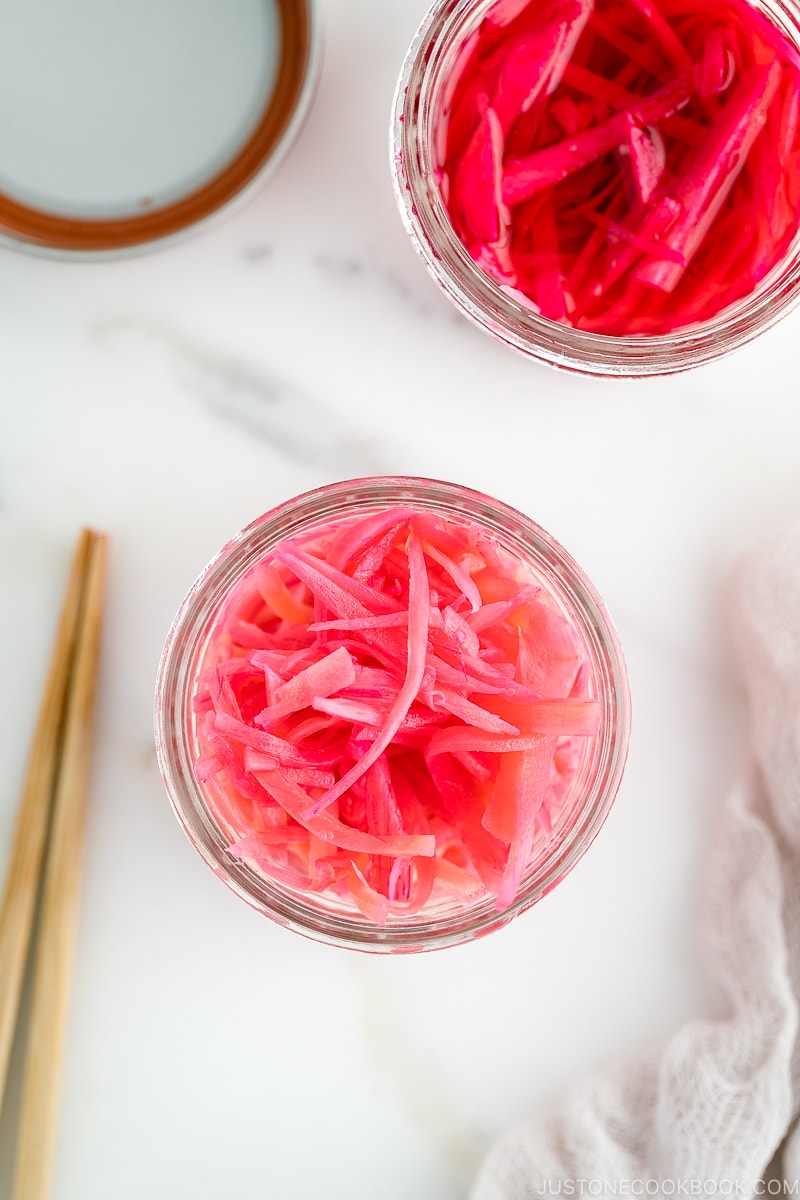
2 Ingredients You’ll Need
1. Young Ginger
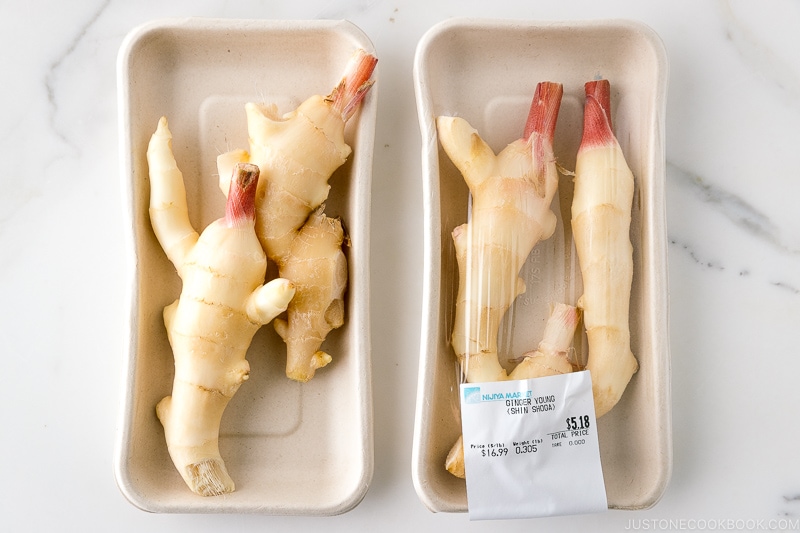
Young ginger is tender and has a mild bite and flavor; it’s not as spicy as mature ginger. It’s in season during summer months. So keep an eye out early May through June at Japanese or Asian grocery stores. We also use young ginger to make pickled sushi ginger (gari). Both pickled gingers last for a year, so if you can grab a lot of young ginger, I highly recommend making a huge batch. They make such thoughtful homemade gifts, too!
2. Ume Plum Vinegar
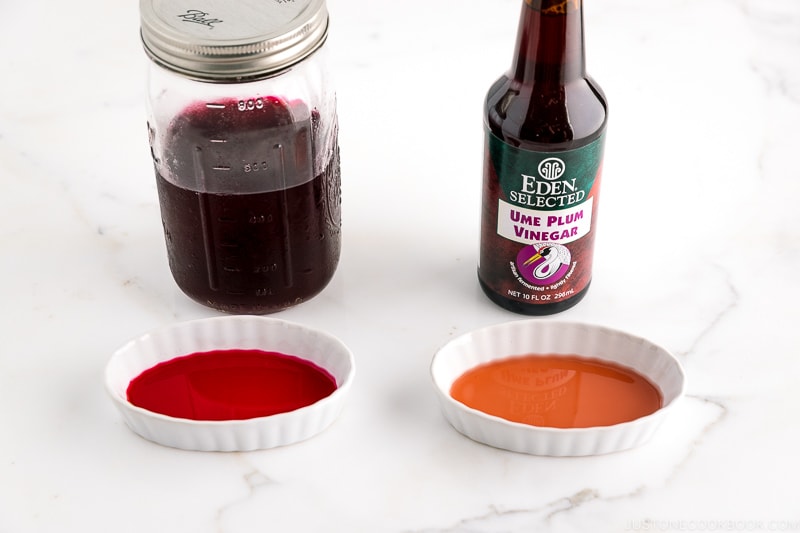
The vivid red color of beni shoga comes from the brine that’s produced during Umeboshi making. If you don’t make these Japanese pickled plums, don’t worry. You can purchase a bottle of this red plum vinegar on Amazon or in your local grocery stores like Whole Foods, co-ops, or health stores.
That’s it! Only ginger and plum vinegar required. No additional salt is needed.
How to Make Beni Shoga
The preparation of these Japanese pickles is easy-breezy!
- Cut the young ginger into julienned pieces.
- Mix the ginger and ume plum vinegar.
- Pickle for a few days!
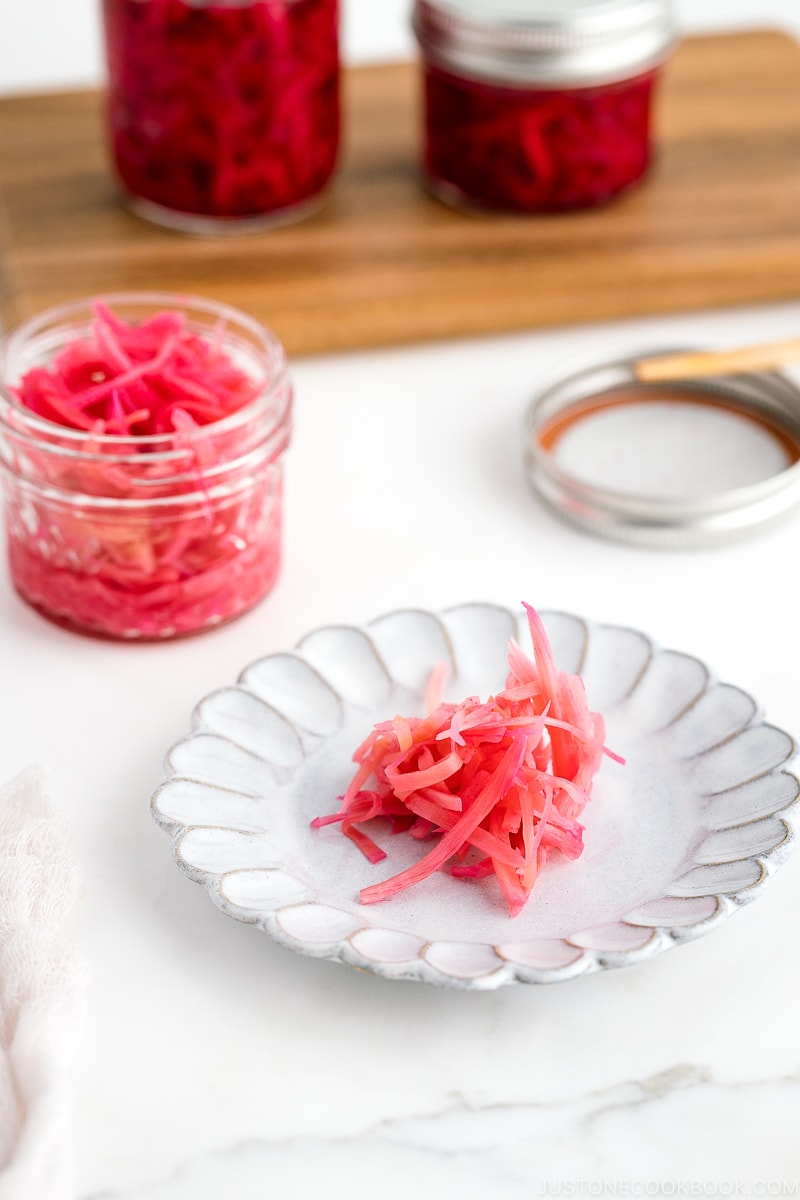
Tips on Making Delicious Beni Shoga
- Use young ginger – It’s really important to use young ginger as it is tender in texture and mild in flavor. Regular ginger can be very fibrous and spicy.
- Use a tiny bit of ume plum vinegar – If you want to make it lighter red in color, use less ume plum vinegar and distribute a small amount of plum vinegar around the ginger.
- Use homemade ume plum vinegar – For those who are already making umeboshi, you’d want to reserve the ume plum vinegar from the process and use it for this quick pickle recipe. It’s like the fruit that keeps on giving as you expand the entire homemade treats.
How to Eat Pickled Red Ginger (Beni Shoga)
Pickled red ginger adds flavor and color to Japanese dishes and is often used as a garnish or palate cleanser between bites. You’ll see it being featured in these delicious Japanese recipes:
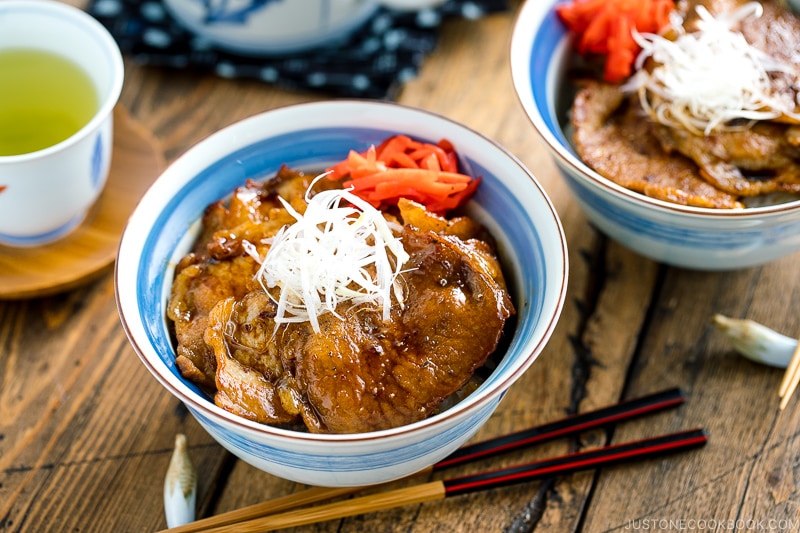
As a Garnish:
As an Ingredient:
- Fried Rice
- Osaka-Style Okonomiyaki
- Tempura
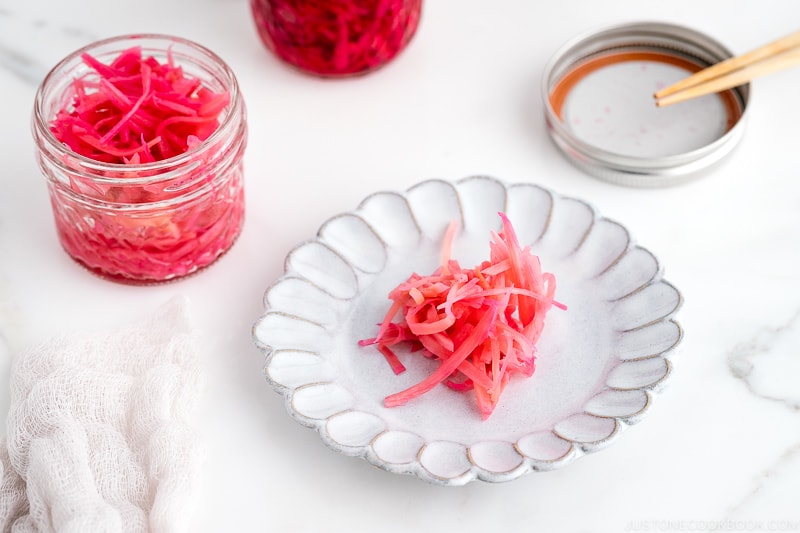
Wish to learn more about Japanese cooking? Sign up for our free newsletter to receive cooking tips & recipe updates! And stay in touch with me on Facebook, Pinterest, YouTube, and Instagram.
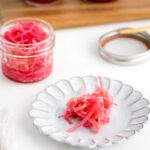
Red Pickled Ginger (Beni Shoga)
Ingredients
- 7 oz young ginger (see the ingredients photo below to estimate the amount)
- ¼ cup ume plum vinegar
Instructions
- Before You Start…Please note that this recipe requires at least 1 day of pickling time. Gather all the ingredients. Sterilize a jar or pour hot water and wipe the jar with high % alcohol (shochu or vodka).
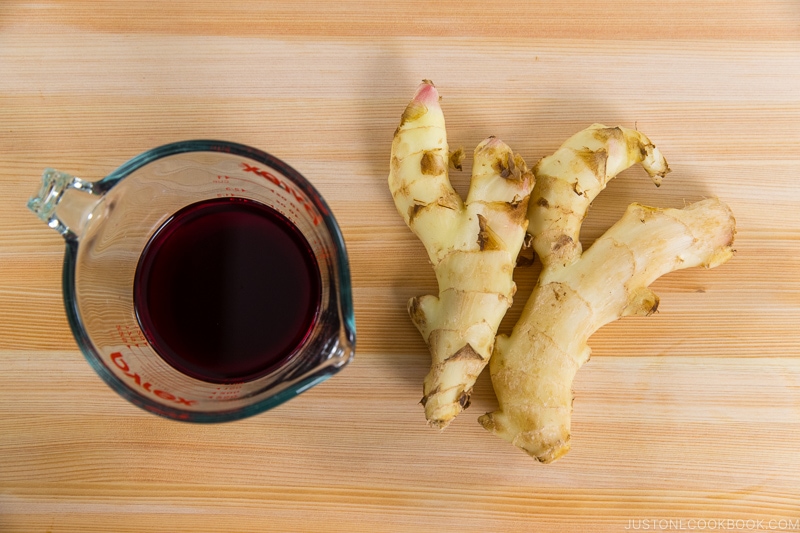
- Peel 7 oz young ginger with a sharp knife (or the back of the knife) or a spoon. The skin is very thin, so you can easily remove the brown spots.
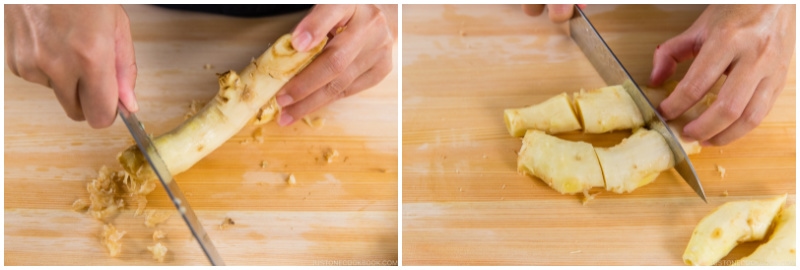
- Using the knife, thinly slice the ginger lengthwise into thin slabs. Stack several slabs and cut into julienned strips.
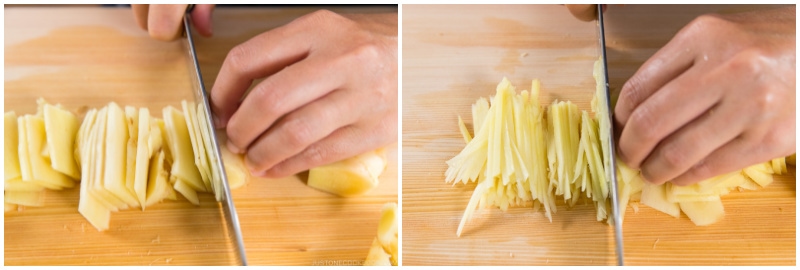
- Bring a medium pot of water to a boil over medium-high heat. Add the ginger strips and blanch for 2 to 3 minutes.
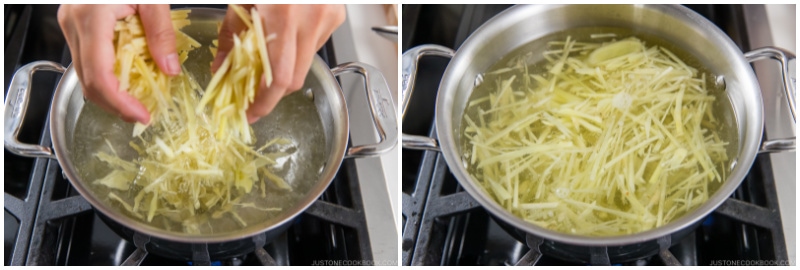
- Drain the ginger well in a fine-mesh sieve and let cool over a large flat surface (I used a bonzaru, Japanese bamboo sieve). Alternatively, wrap in a clean kitchen towel, and gently squeeze to remove excess liquid. The ginger cooking liquid can be enjoyed as ginger tea or shoga-yu (生姜湯).
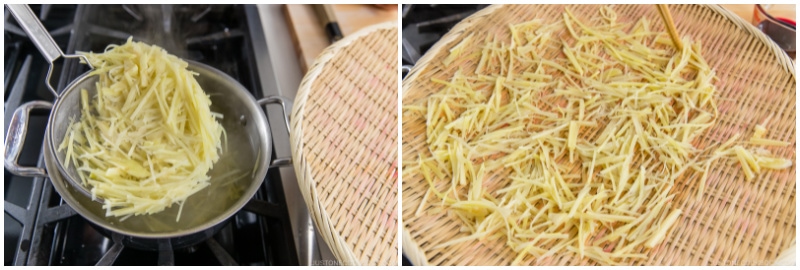
- Once cool completely, add the ginger into small jars or one big jar/container.
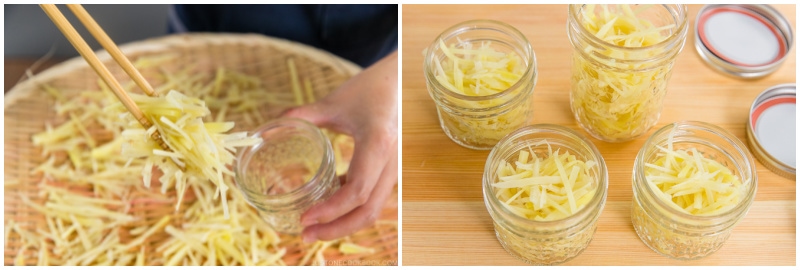
- Add ¼ cup ume plum vinegar. Here, I show two variations: two dark red and two light red in color. To make lighter red, you only add a small amount of ume plum vinegar, almost no excess liquid in the jar.
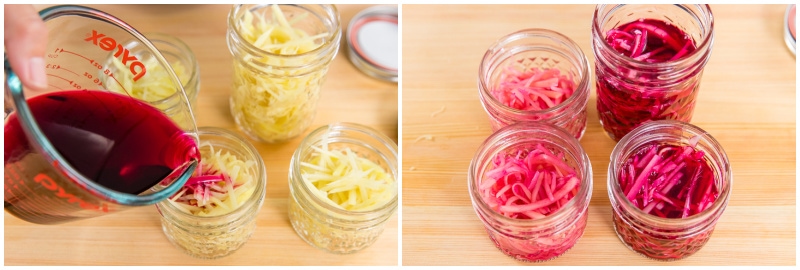
- Mix well and close the lid. Store the jar in the refrigerator overnight and up to several days.
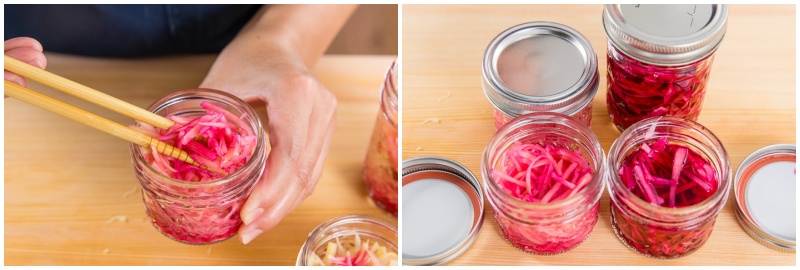
To Store
- You can keep the red pickled ginger in the refrigerator for up to a year. Always use a clean utensil to pick the ginger from the jar before serving.
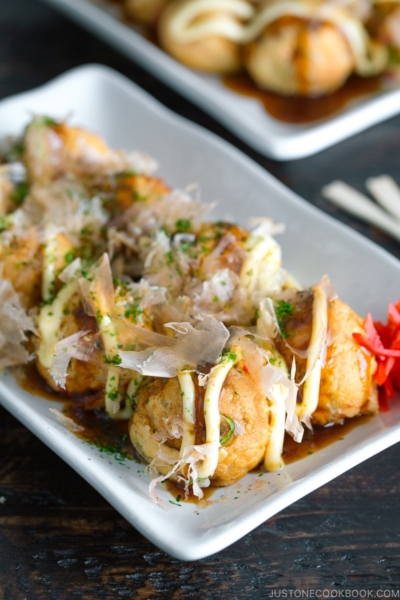
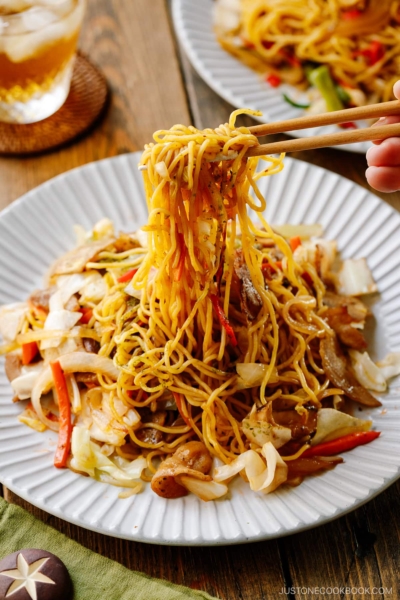
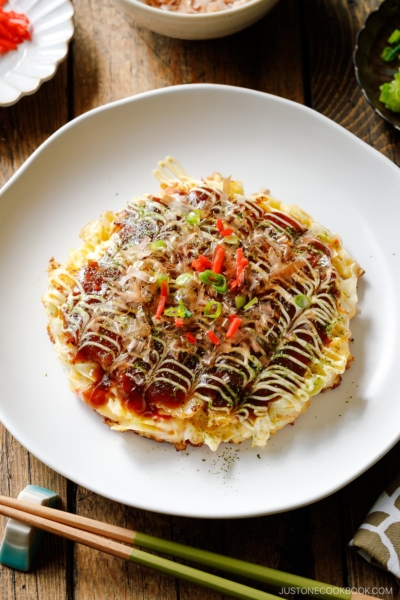
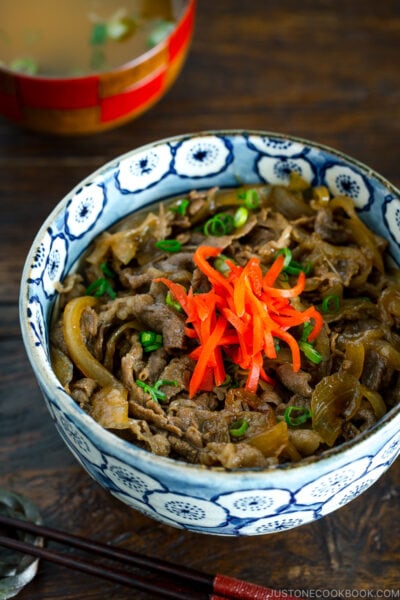




I’m so frustrated! I called all the grocery stores in my area
…AND amazon, instacart, shipt, and ubereats
…AND all the asian, japanese, and specialty stores in a 20 km radius (about 18 stores), and no one carries shin shoga!! :”(
(it’s not the end of the world, my local grocer sells small jars of beni shoga with real umezu…but I would really love to try your recipe and learn how to make it myself. There’s something about using homemade ingredients that makes a dish taste truly special I think. Plus the jars from the store have about a million grams of added salt, so that’s probably not a good thing, lol)
do you know of anyone that sells young ginger online?
Hi Heather, Thanks so much for trying Nami’s recipe!
As Nami mentioned in her post, young ginger is usually in season during the summer, so we haven’t spotted it just yet. But hopefully, it’ll be available soon!
Can this be served with sushi ? Instead of the usual gari kind ?
Hi Surati, Thank you for reading Nami’s post!
You can serve Beni Shoga with
Chirashi Sushi
https://www.justonecookbook.com/chirashi-sushi/
or Inari Sushi
https://www.justonecookbook.com/inarizushi/
But for Nigiri Sushi, Maki Sushi, and other kinds of Sushi, we normally serve Gari instead.
Gari uses Sweet Vinegar (Amazu), and it has a sweeter flavor than Beni Shoga.
We hope this helps!
Any way to make/store this for long term pickling?
Hi Teodor, Thank you very much for trying Nami’s recipe!
If you use the sanitized jar and keep the red pickled ginger and liquid together in the refrigerator, You can save it for up to a year.
Please make sure to use a clean utensil to pick the ginger from the jar when you serve.
We hope this helps!
Can this be made with regular ginger if young ginger is unavailable?
Hi Natalie! If that is the case, sure, you can. We recommend thinly slicing the ginger.
We hope this helps!